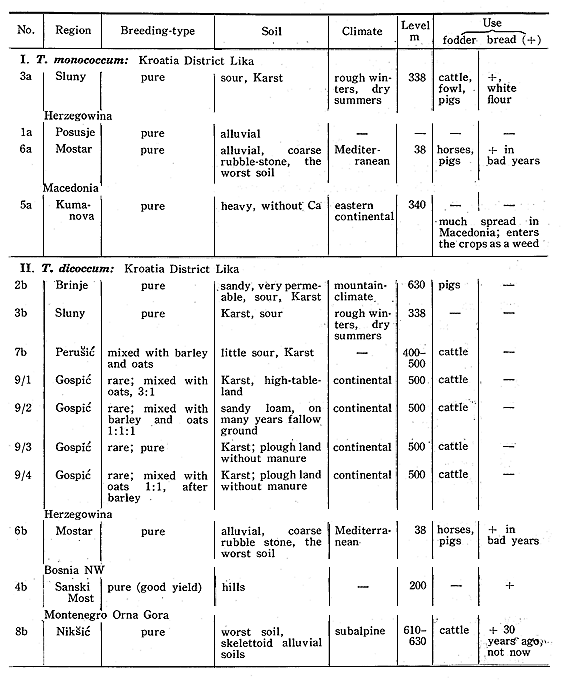
White proved to be constant; the variability of the yellows seems to depend on the weather during harvest; red, grey and some brown types were constant; other browns split for dark and bright or for wax. The plots were too small for gene-analysis. There was little variability within but some between the different strains in Einkorn; more so in Emmer. The first culm (sometimes 2-3) is always much higher than the rest, though nearly all ripen well. The number of culms is usually higher in Einkorn than in Emmer.
It must be of interest to know, that out of the 8 different ear-types of Einkorn selected from the original specimen, 7 proved to have but one grain per spikelet, whilst only one ear (No. 3a in the table) contained 12 spikelets with 2, and 8 with one grain.
Further analysis in comparison to the Dahlem assortment is prepared.